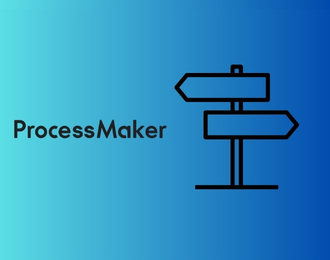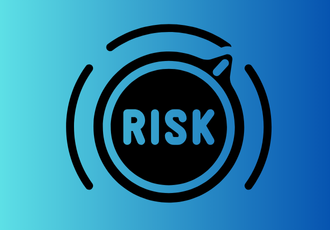What is the Vendor Risk Assessment Process
Vendor risk assessment is the process of evaluating potential risks a third-party vendor might bring to your business—such as data breaches, compliance issues, or operational disruptions.
For example, if a healthcare company outsources its billing to a third-party provider, it must assess whether that provider securely handles patient data and complies with regulations like HIPAA.
Without vendor risk assessment, organizations leave themselves open to security gaps, legal penalties, and reputational damage—simply because they didn’t fully understand who they were working with.
Why Vendor Risk Assessment is Important in 2025?
Vendor risk assessment is a critical component of third-party risk management that helps organizations evaluate the potential risks associated with working with external suppliers, service providers, or contractors. In today’s interconnected business environment, vendors often have access to sensitive data, systems, and operations—making it essential to assess their security, reliability, and compliance posture.
Without proper risk assessment, organizations expose themselves to a variety of threats, including data breaches, supply chain disruptions, regulatory violations, reputational damage, and financial loss. A proactive and thorough vendor risk assessment ensures that you only engage with vendors who align with your company’s risk tolerance and compliance standards. It also helps in making informed decisions, prioritizing vendor relationships, and implementing controls before issues arise.
Key Aspects of the Assessment
To effectively evaluate a vendor's risk level, the following aspects should be considered during the assessment process:
-
Data Access and Sensitivity
Assess what type of data the vendor will access—such as customer information, financial data, intellectual property, or regulated content—and determine the risk level associated with potential exposure. -
Compliance and Regulatory Requirements
Verify if the vendor complies with relevant industry regulations (e.g., GDPR, HIPAA, SOC 2, ISO 27001). Non-compliant vendors could expose your organization to legal or regulatory penalties. -
Operational Resilience and Business Continuity
Evaluate the vendor’s ability to deliver services during disruptions, including backup systems, disaster recovery plans, and incident response capabilities. -
Cybersecurity Practices
Assess their security infrastructure, including encryption, network protection, access controls, and security policies. Look for evidence of regular security audits or certifications. -
Financial Stability
A vendor’s financial health affects their long-term viability. Review financial statements, credit ratings, or third-party financial assessments to ensure they can fulfill contractual obligations. -
Reputation and Past Performance
Research vendor history, client reviews, and any past incidents of non-compliance or service failure. A poor reputation can signal a high-risk relationship. -
Subcontractor Dependencies
Identify whether the vendor relies on additional third parties, and assess the associated risks of that extended supply chain. -
Contractual Protections
Ensure that the contract includes clear terms around liability, service level agreements (SLAs), data handling, breach notification, and exit strategies to mitigate risk.
How to Automate Vendor Risk Assessment Process
Manually managing vendor risk assessments can be time-consuming, error-prone, and inconsistent—especially when you're juggling multiple vendors and compliance requirements. That’s where automation steps in to take the load off your team. With FlowForma Copilot, you can build a fully structured, rule-based vendor risk assessment process in minutes—not days. Whether you start with a simple prompt, an existing form, or even a voice command, Copilot guides you through every step with intelligence and precision.
Let’s walk through how you can automate your vendor risk assessment process and unlock smarter, faster decision-making.
- With FlowForma Copilot, creating a structured vendor risk assessment process is effortless. Provide a text prompt, upload a form or flow diagram, or use voice input to get started!
- FlowForma Copilot automatically structures your vendor risk assessment process using steps, questions, and rules at lightning speed.
- Review your vendor risk assessment process, and once satisfied, click “Build” to bring it to life.
- Open each section to review the questions and rules suggested by Copilot. Click here to define the conditions dynamically to fit your requirements.
- Once done defining, click "OK"
- Define the actions that should take place when they are met. Click “Save” to apply your logic.
- After customizing your vendor risk assessment process with rules and automation, click “Save” to securely store all changes.
- Click “Test Form” to preview how your process functions in a real-world scenario.
- At the top, you'll see the entire vendor risk assessment process is seamlessly structured in minutes with FlowForma Copilot! Thanks to smart rules and automation, your vendor risk assessment process is now fully optimized and ready to deploy — effortlessly transforming the way you work!
Conclusion
To recap, a vendor risk assessment process helps organizations identify and mitigate potential risks from third-party vendors—be it data security, compliance, or operational threats. We explored what this process looks like, why it’s essential, and how failing to implement it can expose your business to serious consequences. Most importantly, we walked through how to automate this process using FlowForma Copilot—turning what was once a complex, manual task into a streamlined, intelligent workflow.
Now that you understand how to evaluate vendor risks and automate the process, your next step is simple: start building a proactive, dynamic risk management system tailored to your organization's needs. Remember to continuously review and adapt your process as regulations, partnerships, and business objectives evolve. Automation is not a one-and-done task—it’s a framework for continuous improvement.
FlowForma Copilot empowers you to build, test, and deploy your vendor risk assessment process in just minutes—without writing a single line of code. Start your journey towards smarter risk management today with FlowForma.
.png) By
By 




